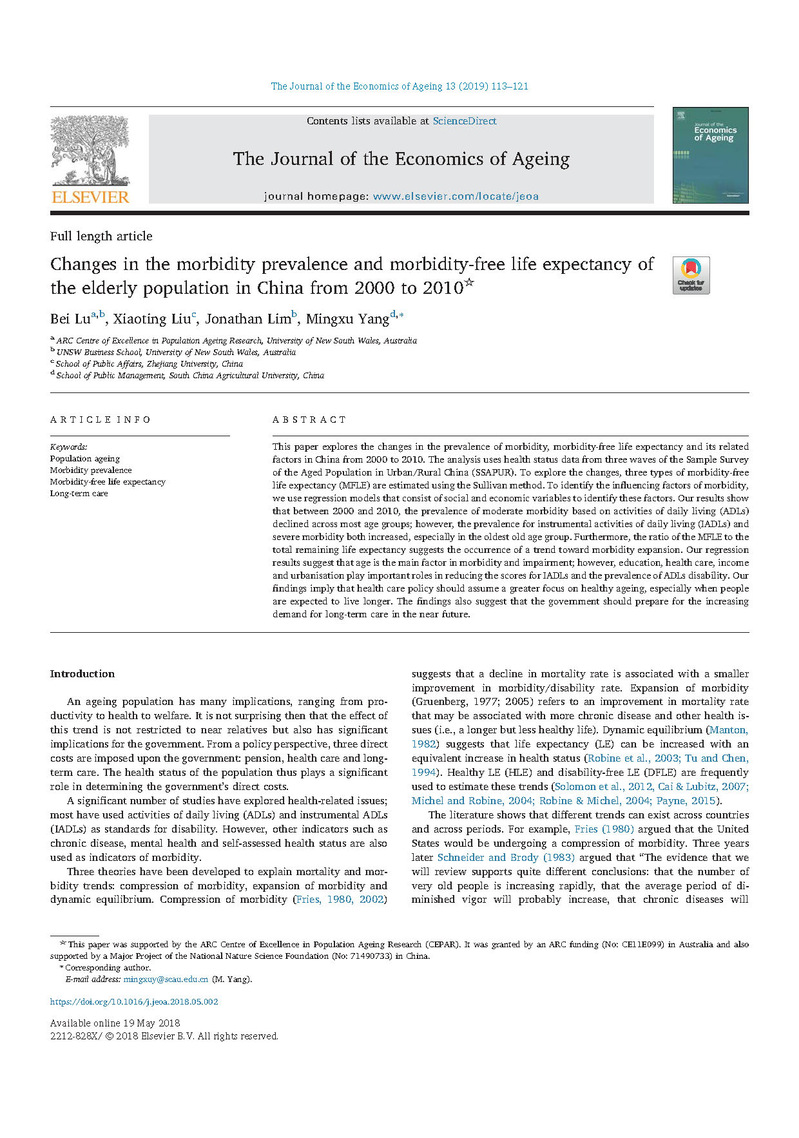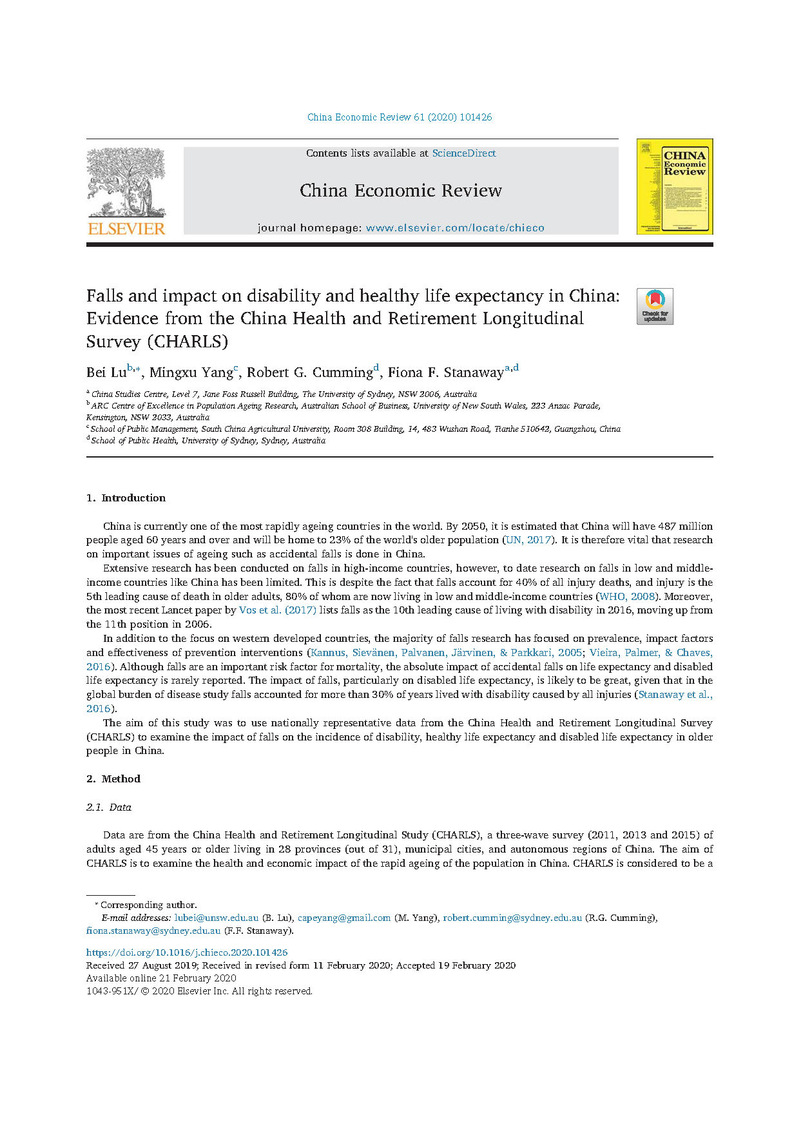Changes in the morbidity prevalence and morbidity-free life expectancy of the elderly population in China from 2000 to 2010[J]. The Journal of the Economics of Ageing
JOURNAL: The Journal of the Economics of Ageing (SSCI 2区), 2019
AUTHORS:
Bei Lu1,2, Xiaoting Liu3, Jonathan Lim2, Mingxu Yang4 (Corresponding author)
1:ARC Centre of Excellence in Population Ageing Research, University of New South Wales, Australia
2:UNSW Business School, University of New South Wales, Australia
3:School of Public Affairs, Zhejiang University, China
4:School of Public Management, South China Agricultural University, China
ABSTRACT:
This paper explores the changes in the prevalence of morbidity, morbidity-free life expectancy and its related factors in China from 2000 to 2010. The analysis uses health status data from three waves of the Sample Survey of the Aged Population in Urban/Rural China (SSAPUR). To explore the changes, three types of morbidity-free life expectancy (MFLE) are estimated using the Sullivan method. To identify the influencing factors of morbidity, we use regression models that consist of social and economic variables to identify these factors. Our results show that between 2000 and 2010, the prevalence of moderate morbidity based on activities of daily living (ADLs) declined across most age groups; however, the prevalence for instrumental activities of daily living (IADLs) and severe morbidity both increased, especially in the oldest old age group. Furthermore, the ratio of the MFLE to the total remaining life expectancy suggests the occurrence of a trend toward morbidity expansion. Our regression results suggest that age is the main factor in morbidity and impairment; however, education, health care, income and urbanisation play important roles in reducing the scores for IADLs and the prevalence of ADLs disability. Our findings imply that health care policy should assume a greater focus on healthy ageing, especially when people are expected to live longer. The findings also suggest that the government should prepare for the increasing demand for long-term care in the near future.
KEYWORDS:
Population ageing, Morbidity prevalence, Morbidity-free life expectancy, Long-term care
DOI: https://doi.org/10.1016/j.jeoa.2018.05.002

TITLE: Falls and impact on disability and healthy life expectancy in China: Evidence from the China Health and Retirement Longitudinal Survey (CHARLS)
JOURNAL: China Economic Review (SSCI 1区), 2020
AUTHORS:
BeiLu 2, Mingxu Yang3(Corresponding author), Robert G.Cumming4, Fiona F.Stanaway1, 4
1:China Studies Centre, Level 7, Jane Foss Russell Building, The University of Sydney, NSW 2006, Australia
2:ARC Centre of Excellence in Population Ageing Research, Australian School of Business, University of New South Wales, 223 Anzac Parade, Kensington, NSW 2033, Australia
3:School of Public Management, South China Agricultural University, Room 308 Building, 14, 483 Wushan Road, Tianhe 510642, Guangzhou, China
4:School of Public Health, University of Sydney, Sydney, Australia
HIGHLIGHTS:
-Provide health multi-state transition rates and mortality risks in relation to incidents of falls using prospective cohort study in China
-Estimate total and health life expectancies with and without falls for adult population
-Highlight the importance of falls prevention to Chinese policy makers with rapid ageing challenges
DOI: https://doi.org/10.1016/j.chieco.2020.101426




